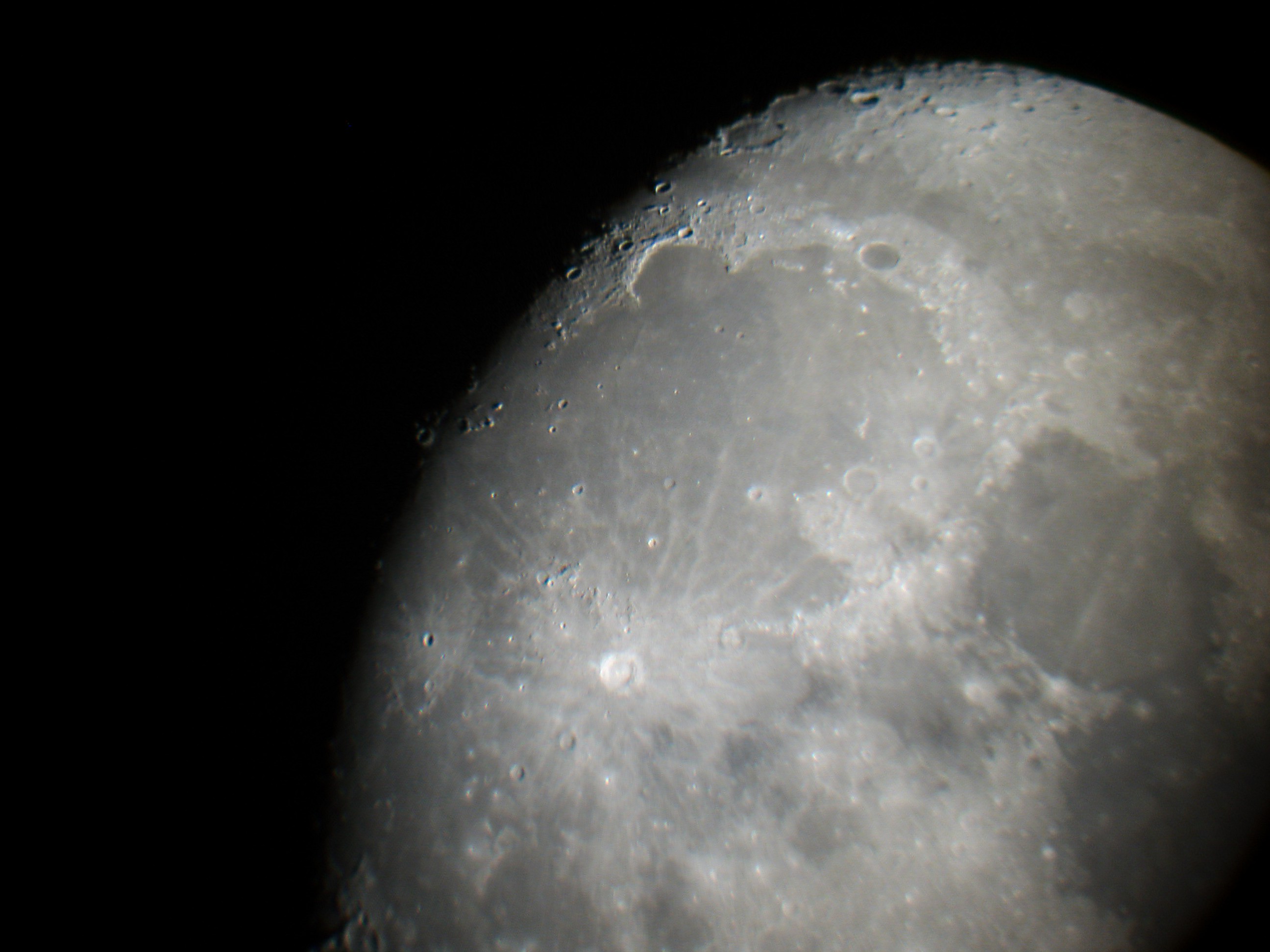News
Johns Hopkins APL Intern’s Rocky Discovery Could Offer Clues to Moon’s Formation
There aren’t many interns who can say that they made a discovery about the Moon before they finished their undergraduate degree, but that’s not the case for Jordan Bretzfelder, an intern at the Johns Hopkins Applied Physics Laboratory (APL) in Laurel, Maryland.
In a recent study, Bretzfelder, working with researchers at APL and NASA’s Goddard Space Flight Center, announced the discovery of rocks within the Moon’s Imbrium Basin — the largest of the dark areas visible to us on Earth — that are consistent with the minerals scientists expect to make up the lunar mantle. If confirmed, the team’s discovery could fill a void in our understanding of how terrestrial planets like Earth and Mars formed.
“This discovery can open a window into the rock formations that scientists don’t know anything about, and help us make sense of planetary records,” Bretzfelder said.
The team’s finding was published Nov. 23 in Geophysical Research Letters.
The Moon shapes how we believe rocky planets form and differentiate into a crust, mantle and core, an idea captured in a theory known as the Lunar Magma Ocean model.
This model posits that, after the Moon formed, it was covered by a massive ocean of molten rock that gradually cooled. When this happened, minerals slowly crystallized and separated according to their densities: the denser minerals sank toward the core, and the lighter minerals rose toward the surface.
“Our understanding of all planetary evolution of solid planets builds on the Lunar Magma Ocean model, which was created based on the analysis of returned lunar samples,” said Rachel Klima, a planetary scientist at APL and co-author of the paper.
Between the Apollo and Luna missions of the 1970s, more than 2,000 lunar samples were returned to Earth, and these samples off the Moon’s surface were augmented by the world’s collection of lunar meteorites.
Analyses of these samples showed that the bright part of the Moon’s surface is mostly made up of a mineral called plagioclase. This finding helped scientists build formation models that suggest the Moon’s mantle should be made of olivine and orthopyroxene — minerals rich in iron and magnesium.
But scientists couldn’t conclusively link any of the lunar samples to the Moon’s mantle.
Scientists turned to examining the Moon’s dark basins, which are enormous cooled lava-filled craters formed by asteroid impacts into the surface. Because the Moon is tectonically inactive, these are the only places where materials from inside the Moon could emerge.
That fact inspired Bretzfelder to look for areas within the basins that have very little plagioclase.
Previous studies had remotely observed the Moon’s surface composition with only one instrument, making it difficult to confirm any suspected mantle locations. So Bretzfelder instead used data from both NASA’s Moon Mineralogy Mapper (M3) and Diviner Lunar Radiometer. Because these instruments use different wavelengths of light to study the surface, they can provide complementary but unique information about the mineral surface composition.
Bretzfelder searched 10 potential sites around the Imbrium Basin, where flecks of mantle material were suspected to have flung to the surface during the impact that formed the basin. She eliminated them one by one until finally, along the southeastern edge, she found two areas with large pieces of crustal material surrounded by extremely orthopyroxene-rich materials — a potential indicator of excavated mantle material.
“This is the first time we have found something that could be mantle, a large area measuring multiple scale blocks, rather than microscopic pieces,” Klima said.
While the team is thrilled by the find, Klima noted that the region is “very bumpy,” meaning there might be issues with the way light scatters in the area. Therefore, the team wants to pull in more data, including neutron and gamma ray data, to support its conclusions.
If subsequent analyses confirm the findings, Klima said the location of the discovered mantle may be a potential landing site for an automated sample return mission.
“It would be incredibly helpful to bring back large, definitive samples that might be bits of the mantle,” she said. “A good sample would really answer a lot of fundamental questions about the Moon as well as how planets form.”
Beyond verifying the finding, Klima said the next step would be to look at other basins, which show fewer indications of mantle material, suggesting there might be something unusual about the Imbrium Basin.
In the meantime, Bretzfelder, who began as an intern at APL in 2017 and completed her undergraduate studies in 2019, is now working toward her Ph.D. at the University of California, Los Angeles. She is glad for the chance to make a likely groundbreaking discovery while at APL.
“I’m really excited to see where other scientists take this idea,” she said.
